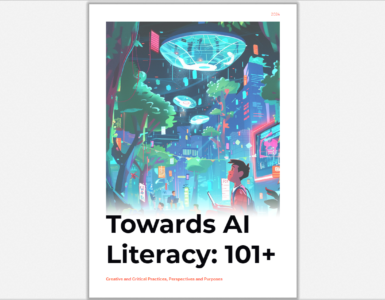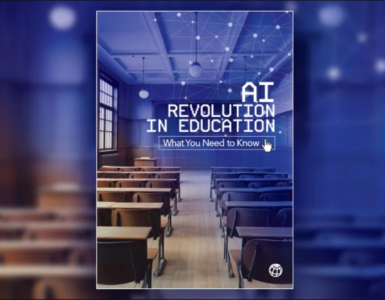by Mutlu Cukurova, University College London, UK.
While the shiny allure of Artificial Intelligence (AI) has been making headlines for a while, the real questions in Education are about how these technologies fit into our classrooms and how teachers, the real heroes of our education system, feel about them.
Do you remember the excitement when the first computers entered our schools? The promise was revolutionary: kids would learn faster, better, and more individually. But fast forward, and we realize it’s not just about the computer on the desk; it’s about how we use it. The same goes for AI.
In our classrooms today, adaptive learning platforms, powered by AI, promise a custom learning experience for every student. Imagine a class where the system understands each student’s pace and tailors the content and lessons accordingly. But here’s the catch – these platforms need to seamlessly fit into the everyday life of teachers. And teachers, with their packed schedules, need to feel like these tools are helping, not adding to their load.
In my recent research in collaboration with researchers at Alef Education, a leading adaptive learning platform in UAE, we conducted a survey with hundreds of teachers, gauging their experiences with AI-driven adaptive learning platforms. I went about it a bit differently. Instead of relying on traditional methods of observing teachers or asking them to fill out surveys, I delved directly into the data from the adaptive learning platform they use. This allowed us to capture teachers’ real-world engagement, offering a more authentic perspective.
Through extensive research and statistical analysis, we identified seven crucial factors that influence a teacher’s decision to embrace AI-driven adaptive learning platforms.
- Workload Management: Teachers already have their plates full. So, it’s essential that these AI platforms don’t pile on more work. They shouldn’t find themselves juggling between multiple tools or redefining their pedagogical practices just to integrate AI.
- Trust & Ownership: Trust goes a long way. Teachers are more likely to use a tool if they believe in its potential. By involving teachers in the platform’s design process and ensuring it meets their needs, we can foster trust.
- Professional Guidance: As with any tool, mastering AI platforms requires some guidance. The teachers value the support and professional development opportunities associated with these tools.
- Ease of Use: No one wants to wrestle with complicated software, teachers included. The easier these platforms are to use and integrate into the classroom, the more likely they’ll be adopted.
- Quality Perception: The perceived quality of the AI platform significantly impacts its acceptance. It’s not just about how fancy the tool is, but how effective it is in aiding teaching and learning.
- Classroom Orchestration: The ability to fluidly transition between AI platforms and other pedagogical activities is crucial. Lesson plans that support this integration can make a world of difference.
- Ethical & Privacy Concerns: With data breaches making headlines, it’s no surprise that teachers are cautious. Ensuring that AI platforms respect privacy and ethical standards is non-negotiable.
What struck me was that while the quality of the specific platform we studied received nods of approval, there were pressing concerns. Teachers were wary about the added workload, the difficulty of integrating the platform into classroom activities, and the big elephant in the room: ethical and privacy concerns.
Here’s the good news: most teachers saw the potential. They believed in the platform’s success, felt they had enough knowledge to use it, and felt they received adequate support for its effective use. The message was clear: “Make it ethical and easier for us, and we’re on board.”
One might wonder, what about the technical infrastructure? The need for laptops, good internet, and all that jazz? Surprisingly, that wasn’t a significant concern for the teachers we surveyed. It seems the UAE schools have got that part covered pretty well, but those issues are pre-requirements for effective adoption of AI in schools and should not be ignored in other contexts!
So where does this leave us? If we’re dreaming of a future where AI is as standard in schools as blackboards once were, we need to think beyond the algorithms and shiny interfaces. While AI holds immense promise for the future of education, its adoption is intricately tied to these seven factors. We need to ensure that as we bring AI into classrooms, we’re addressing these concerns head-on. We need to step into the shoes of teachers, understand their day-to-day challenges, and then design solutions. We need platforms that don’t just impress in lab tests but win hearts in real classrooms.
The journey of integrating AI in schools is more than a tech challenge; it’s a human one. And as we make strides, the focus should be on making the transition smoother and more beneficial for the real stars: our teachers.
So, next time you hear about a revolutionary AI tool for schools, ask not just about its features, but how it fits into a day in the life of a teacher. Because that’s where the real magic will happen!

Author
Prof. Mutlu Cukurova, Professor of Learning and Artificial Intelligence, University College London, UK














